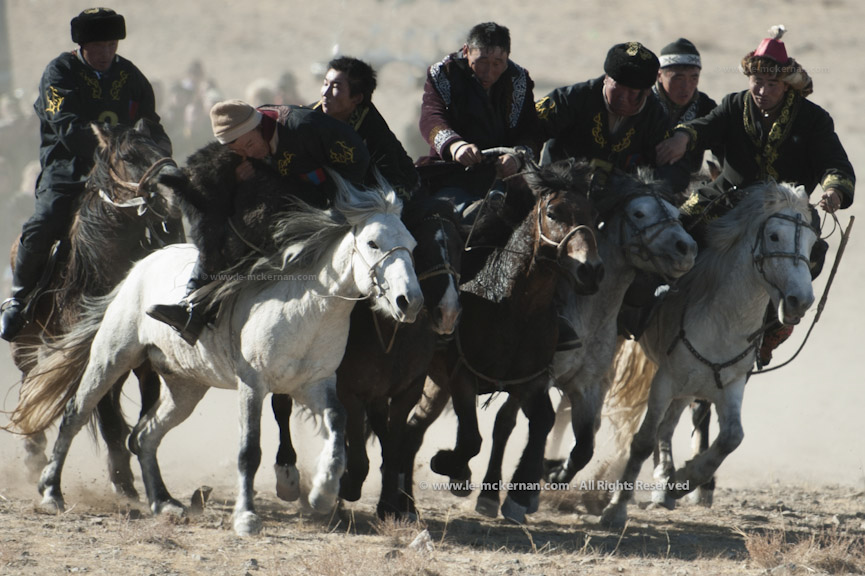
‘Oh, bugger‘ was my first thought as I went flying thru the air. ‘Ouch‘ was my second thought as I landed on the painted rocks which served to demarcate the boundary separating the spectators and the players. Buzkashi is a horsegame typically compared to polo — but the former is played with a ball whereas the latter is played with a headless goat carcass. The other difference is that polo is typically considered a gentleman’s game whereas buzhashi is a seriously rowdy, highly competitive and very fierce spectacle. Nonetheless, I thought I was relatively safe as I was seated in a place of honour. I was on the front bench alongside some senior and distinguished Eagle Hunters. Surely these boys won’t want to run over their grandfathers, or so I thought … Not so as these boys take buzhashi very seriously and the locals know this. So, as a wall of four galloping horses headed towards the benches, the ‘grandfathers’ were swift and nimble and avoided the horses. I, on the other hand, went flying thru the air as the horses (and riders) ignored the painted rocks.
As I dusted myself off, my third thought was on whether or not I’d managed to get ‘that perfect shot’ of the thundering horses coming towards me. But, before I could check the images from my camera, I noticed that I was suddenly surrounded by the locals. “OK? OK?” they all asked with their eyes and kind gestures. “I’m OK.” I smiled and gave them the ‘thumbs up’ and tried to assured them that all was fine but they still seemed genuinely concerned. “OK? OK? Sit, sit.” And then, more people came up to check that I was unhurt. It was then that I realised that there was some secret or unspoken code of hospitality at stake. The locals were appalled that a visitor was potentially injured. I tried to assuage their concerns by resuming normalcy and taking more photos of the game. (Note: nothing stops buzhashi.) But the crowds remained. And then the penny dropped — the locals were now forming a human shield around me against future harm.
I was so charmed by their generosity that the game no longer became important to me. Instead, I started to take photographs on my iPhone of the kids protecting me. I used the Hipstamatic application on the phone to create interesting images and the kids were thrilled to see their portraits. And, before I knew it, the game finished. In the end, I didn’t get that ‘perfect’ shot. Nonetheless, I had something better — I had the warmest memory of the kindness and concerns shown by ordinary Mongolians towards me during the game. It was an endearing and unforgettable moment.
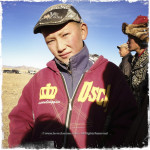
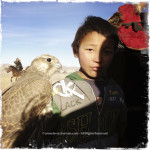
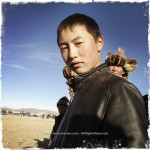
The bitter and biting cold was another unforgettable memory of Mongolia. We did our research beforehand and packed for all seasons. During the day and under the blazing sun, it was warm and bright (sunblock and hat mandatory). But, on a clear and star-filled night, it was brutally cold. On the first night, I had my woollen stockings plus two layers of thermals whilst tucked inside an Arctic sleeping bag and under a thick wool blanket (loaned to us by the family we were staying with). During the autumn and winter, the family moved into their mud-brick winter house; during the summer, they use their ger (a Mongolian yurt) as they move their herds to summer pasture. We were sleeping in their summer ger — and it provided little warmth. Every night, the host lit a dung fire in the ger’s central stove, but, the dung fire burned too quickly. Within 30 minutes, the ger was cold again as the biting winds found every holes and gaps in the thin walls. On the second night, I added more thermals but I still found it uncomfortably and incredibly cold. It was so cold that it was difficult to fall asleep. In fact, it was so cold that the decision to remain inside the sleeping bag and shiver/suffer the cold (and pray that I’ll eventually fall asleep) was better than to unzip the bag and expose myself to even more horrible coldness in order to put on more layers. Each night thereafter I added more layers until I looked like the Michelin man. It was only on the seventh and final night in the ger that I finally had a warm and comfortable sleep — at that point, I had: 1 woollen stocking, three pairs of wool/cotton socks, three thermal pants, three thermal shirts plus a double-thickness cotton shirt plus 1 cotton rugby shirt whilst tucked inside a sleeping bag under a wool blanket and a sheepskin coat (also on loan from the family) used as another blanket. And this was in early October! I cannot imagine the cold during the deepest and darkest winter.
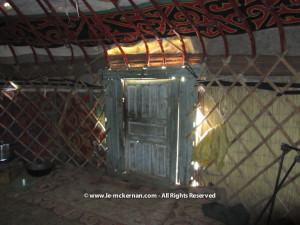
‘the leaky ger’ — see video tour (external link to YouTube)
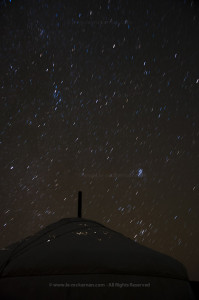
‘the leaky ger’ at night
Manaa, our host, is a champion eagle hunter with a beautiful wife and 11 grown children. Most of his fledglings have either moved to the village and/or are boarded at school. Even so, the house is rarely quiet. Mongolian hospitality is a never-ending pot of milk tea and a continual stream of neighbours and visitors. During the weekend, the school kids return and the house teems with life. In addition to the kids, the house is home to two golden eagles. The elder eagle has been in Manaa’s care for 5 years and is quite docile. The other bird is newly acquired and still very wild. As such, it is kept in the kitchen so that it would acclimatise to the sounds, smell and sight of humans.

our host with his trained eagle
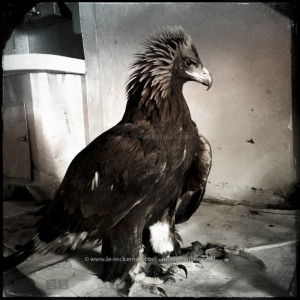
a wild eagle in the kitchen
The eagle hunters only use female birds as they are significantly larger than male birds. Furthermore, they only use eagles that have already been trained to hunt by their mother. The hunters then train the birds to hunt for them. The first step is to teach the young eagle (typically at age 1) to accept food (a poor bunny in this case) from the eagle hunter. Once the bird accepts the eagle hunter as it’s ‘master’, then the eagle is taken outside and tethered to a rope and taught to catch a lure and then fly back to it’s master. We were told (via our translator) that Manaa has trained 6 eagles successfully in his career and that it would take approximately 20 days to train a smart eagle. Once an eagle is trained and successfully captures an animal, the eagle hunter would reward it by giving it the warm liver of fox/rabbit/marmot. A good hunting eagle is typically kept for ten years before it is released back into the wild so that it could breed. At the start of the breeding season on the eagle’s 11th year, it is taken to the top of the highest nearby peak and released. We were told that it is extremely rare for a released bird to return back to it’s master’s home. But if it does return, then it is taken further afield and released again.

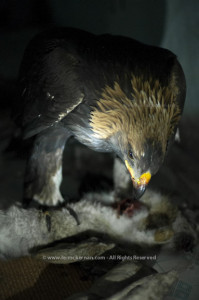
We were in western Mongolia specifically to see the two-days Golden Eagle Festival. This is a public-private enterprise between the local government and a tour group (Nomadic Expedition) to showcase and to preserve a local tradition as well as give an economic injection into a sleepy part of Mongolia. We wanted our tourist dollar to stay in Mongolia and therefore opted to travel independently. We used a local agent (Blue Wolf Travels LTD — which we would NOT recommend) to book our private gerstay, our translator/guide, and our driver. The plan was to arrive before the crowd and spend two days exploring the region first. Then, we would attend the festival followed by two days of horse riding & hunting with the eagle hunters. And our seventh and last day in western Mongolia would be a rest day. Very little went according to plan because Blue Wolf was hugely disorganised. In fact, the only days that went perfectly were days that Blue Wolf was not involved in the logistics. (I would recommend avoiding Blue Wolf — please see the specifics in my review of the company.)
Blue Wolf malarky aside, we thoroughly enjoyed visiting western Mongolia. We loved staying with Manaa and his family. We ate with the family and shared their communal plates. Like the locals, we dropped into other people’s houses to say hello and were supplied with endless milk tea (full fat and salty). The evening entertainment was based on songs and storytelling. Despite their hard lives, Manaa and the others know how to live to the fullest. On the last night of the Eagle Festival, Manaa and his neighbours celebrated the local village’s festival successes until 5:30 AM. The celebration only ended because it clashed with the start of his morning chores. His animals needed care so he exited from the party and took the birds out for their morning exercise and then he tended to the cows, yaks, horses and goats.
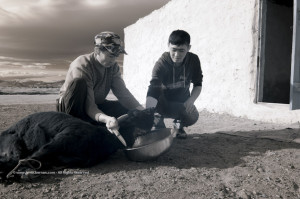
Manaa’s sons kill a goat for dinner

a typical dinner scene: mutton and potatoes in the communal plate (center of the table), endless cups of tea, and Mongolian vodka.
Travel to western Mongolia required a robust constitution. Prior to our arrival, I’d spend weeks trying to hunt down the elusive typhoid vaccine. The global manufacture’s recall resulted in a very tight supply and I was told by numerous medical centres and hospitals in Hong Kong that the vaccine could not be purchased in HK for love or money. Many false leads later but thanks to a tip from the HK government, I found a Christian medical clinic that had the vaccine in stock. And, it was needed!
In western Mongolia, one did one’s ablutions in the open fields. In addition, the primary source of fuel for cooking was animal dung. And, whilst there was a washing basin the kitchen, the water was from a nearby well. Furthermore, the cook (from Blue Wolf) didn’t always wash her hands after filling the stove with the quick-burning dried dung. And so we were incredibly grateful that we were fully vaccinated up for all types of bugs and ailments before we arrived.
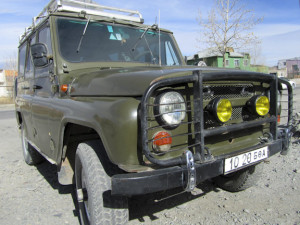
What we didn’t anticipated were the bruised elbows and sore back from bouncing along the rocky steppe and dirt paths. There is ‘off roading’ and then there is ‘Mongolian off roading’. We crossed boulders-ridden riverbeds, climbed steep mountain sides, and tracked across stoney and sandy desert paths in an old Soviet jeep. Coming from a super-condensced city, it was a joy to be able to stretch one’s eyes towards the horizon. But, the joy was quickly replaced when we realised that getting from point A to point B required hours of travel.
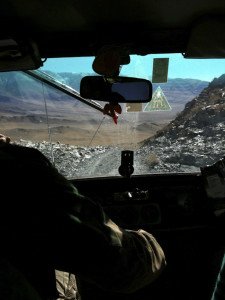
See video — note: this is an external link to YouTube
Mongolia was truly and dramatically vast. Thankfully, Bruce downloaded some old Soviet maps and overlayed these maps onto Goggle Earth and he uploaded these files onto his GPS device. Thus, we were able to see our progress in real-time in Mongolia. Once we were travelling some distance to see a stone monolith. A quarter of the way there, the driver stopped the car (twice) to inspect something. At this point, we checked Bruce’s GPS device and realised that we were in the middle of absolutely nowhere. Furthermore, we were in the Mongolian desert and had no spare water (and no spare blankets in case we got stuck there at night). And, we were so remote that there was no mobile phone reception. And to make matters worse, due to a Blue Wolf screw-up, we had a change in the itinerary which meant that no one knew our true destination. So, if the car broke down in the middle of Nowhere Mongolia, we would truly be 100% buggered. At this point, Bruce made the right decision and cancelled our outing to see the stone monolith.
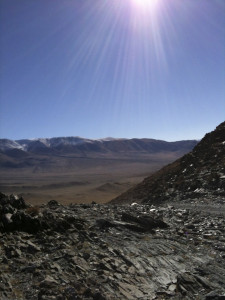
Unfortunately, this curtailed roadtrip was not an isolated incident as the local agent was completely ‘canat’ (a newly invented adjective!). Thankfully, we had a very good driver and translator/guide which helped mitigate our losses. But despite losing time going to the wrong places, etc. we could not stop enjoying the endless natural beauty and stunning landscapes.
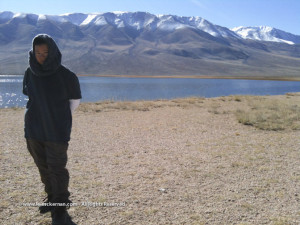
The absolute highlight of the trip was the Golden Eagle Festival. At approximately 10 AM, it started off with a parade of the Eagle Hunters (my guestimate was that approximately 30 Eagle Hunters participated in the 2013 festival). The first two hours of the festival was vicious — every Westerner (and his dog) had multiple cameras, smartphones, video cameras, binoculars, etc. And so before the official eagle competition started, the photographers (myself included) jostled and competed amongst ourselves for ‘the photo opportunity’. It was an ‘Eagle Hunter paparazzi’ on an epic scale. Thankfully, the photo mania calmed once everyone realised that the festival spanned two days, there was plenty of space to spread out, and by stepping on top of each other, no one was going to get a good photograph.
Day 1 was to test the eagle’s response to it’s master’s voice. One by one, the eagle hunters called out to their eagles. The eagles were released from a high peak and they were timed. The quickest one to perch onto it’s master’s arm was the winner. On Day 2, the test was on the eagle’s ability to catch a moving bait (dead fox/rabbit dragged behind a horse). Again, the eagles were timed and judged on speed and effectiveness on landing the bait. The eagle competition ended by midday on Day 2. That afternoon was an opportunity for the local boys to demonstrate their horse riding skills as well as compete against neighbouring villages in robust games of buzhashi.
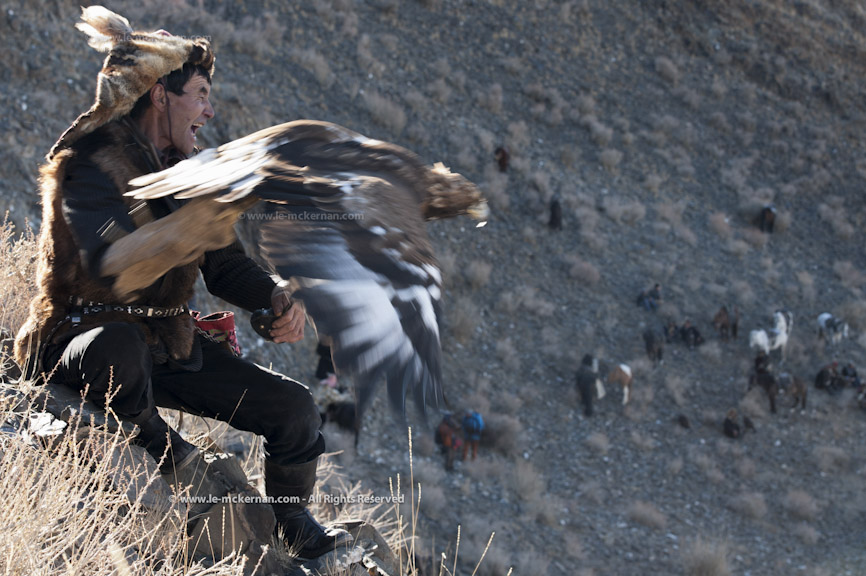
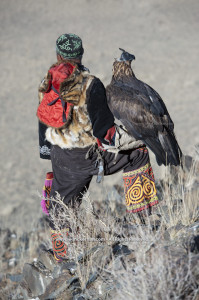
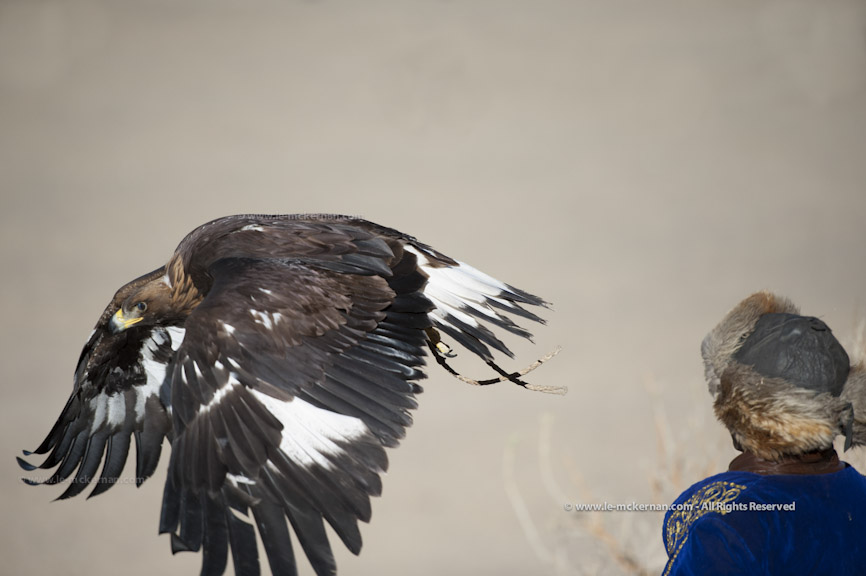
Bizarrely, some of the eagles determined that photographers were more desirable than the dead foxes/rabbits. Two photographers were “attacked” — and one was actually hunted by the eagles twice! (Bad eagle karma?) Thankfully, neither the photographers nor the birds were injured.
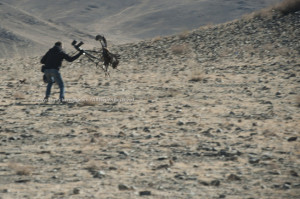
photographer used his tripod to defend himself from an eagle
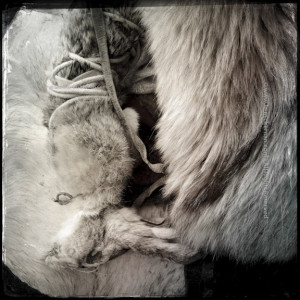
the bait …
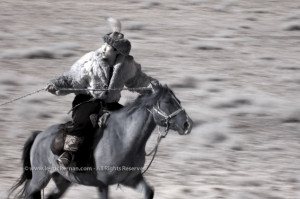
the horseman luring the eagle with the rabbit bait
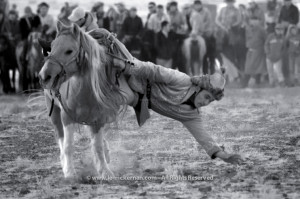
picking up a small parcel on the ground whilst on a moving horse
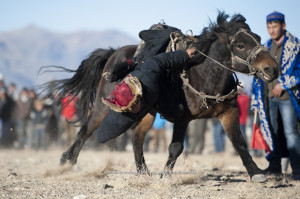

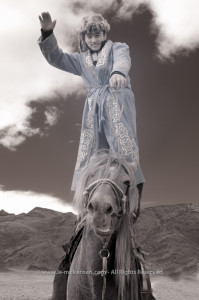
show-off !
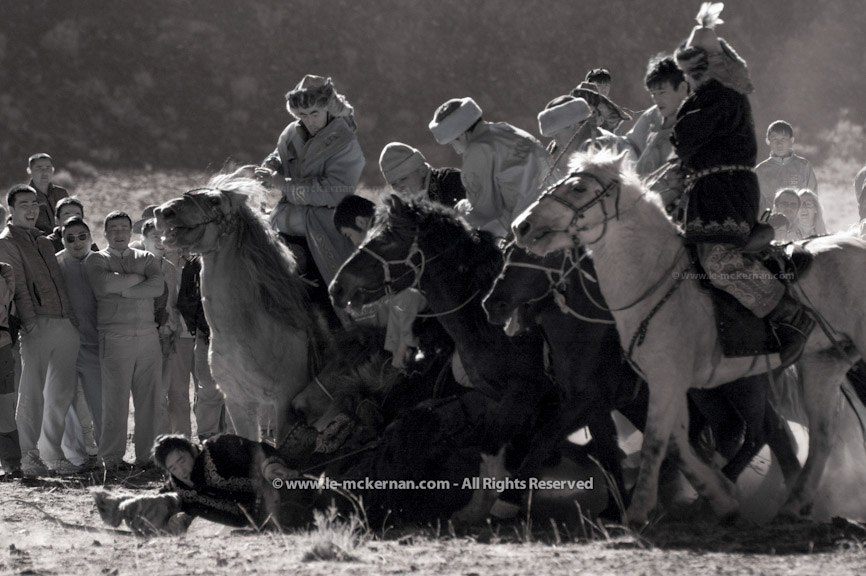
Ouch! Player is knocked off this horse during a game of buzhashi
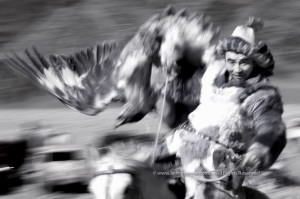
Despite the bitter cold at night, the harsh travelling condition and the many frustrations and disappointment with our local travel agent, we thoroughly enjoyed visiting Mongolia and would highly recommend the Golden Eagle Festival in Olgii/Ulgii. If possible, we would recommend avoiding the the tourist gers and hotels. The best way to get “under the skin” of a place is to do a homestay or a gerstay with a local family. Our recommendations are posted below.
If you have questions, please do not hesitate to contact me at feedback@le-mckernan.com. Happy travels!
BTW — the first image below is the image I’d managed to take before getting knocked over. The second image shows one of my “human shields” trying to get my attention to warn me about the approaching horses. It still tickles me pink when I reflect on the kindness and care of the locals!
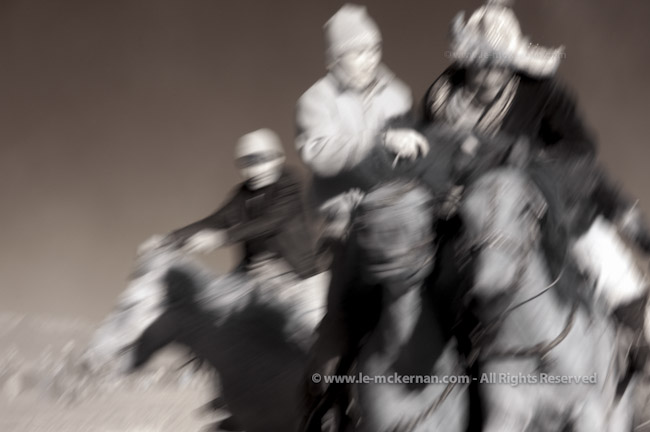
before …
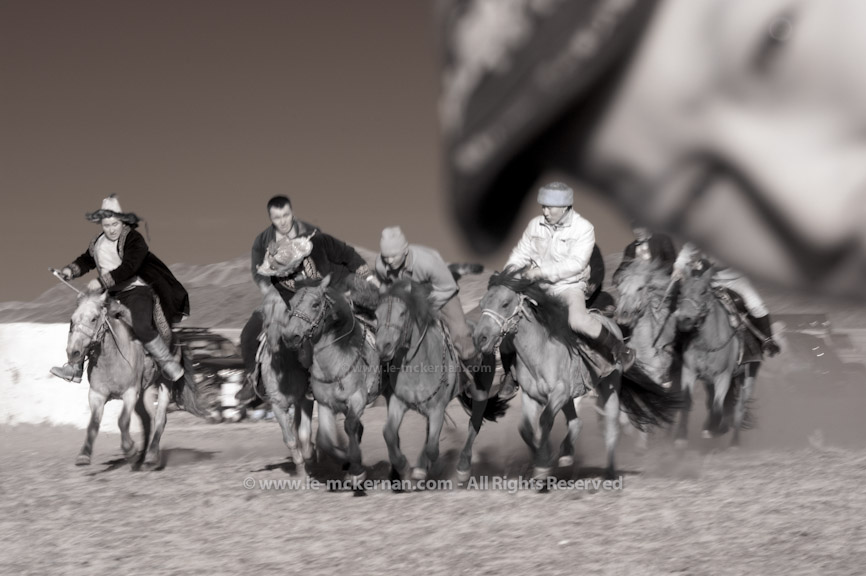
after …
For additional photographs, please check out this link.
Travel Tips:
For anyone interested in travelling to Western Mongolia, our suggestions are:
- Pack well and pack wisely. Mongolia certainly has the extremes in temperature and in condition. And, don’t assume that your host will have sufficient supplies.
- If possible, pack light — especially if you are flying into western Mongolia. Aero Mongolia is fastidious about charging extra for excessive baggage weight (including carry-ons)! This is a cash cow for them and they will ( rightly ) milk it for all that they can. As a workaround:
- You could stuff your coat pockets with your heavy carry-on items when you check in (they don’t make you weigh-in your coat). Once you have your boarding pass, you can then put the heavy stuff from your coat pocket back into your carry-on bag.
- Some people are posting their sleeping bags, etc. to/from Mongolia via DHL, FedEx, etc. to avoid paying the stiff excessive baggage fee.
- Mongolia is becoming an ever popular travel destination and we know firsthand of two incidents in which people were ‘bumped’ from their gers due to double-booking. During the eagle festival, demand easily outstrips supply. This is where you need to work closely with your local agent and confirm (and then double/triple confirm) the arrangements.
- Work only with reputable agents or one that comes recommended. We met another traveller who booked her arrangements by email with a local agent and only had his mobile number as a contact. When he failed to pick up her messages, she had no other way to get in touch with him. She then had to book herself into a dinky hotel at an exorbitant rate.
- The Lonely Planet publishes a comprehensive ‘what to pack’ list. In addition to their list, I would also suggest:
- Lots of baby wipes or deodorant paper. Unless you are staying in a hotel or in a tourist ger, bathing (especially in the colder months) would be difficult.
- For the sake of a comfortable bottom, bring along the toilet paper that you normally use at home.
- For the ladies, I cannot recommend enough either http://www.freshette.com or GoGirl. You can typically find these in any camping or outdoorsy shops.
- Plastic bags! I know that they are environmentally evil, but, a few spare plastic bags are a godsend under the right circumstances such as: to serve as a garbage bag, a puke bag (it happens!) or just to separate the clean from the not-so-clean clothes, etc. (If you are staying in a rural area, then bring your garbage into town at the end of your trip and dispose of this responsibly.)
- Pain medication (for sore backs), hand/feet warmers (the type skiers put inside their gloves and shoes), and a few extra pairs of socks.
- If you are doing a homestay/gerstay, then small gifts of hospitality will give you a lot of mileage. For example, my jars of honey and packets of dried mangoes were very, very well received. I also knew (from past travels in Central Asia) that sharing cakes with the family would be a big win so I brought along a Dutch loaf cake (made with dried fruits, nuts and spices). This was quickly devoured by all.
- A Polaroid-type camera. Ours was a SERIOUSLY (!) MEGA-HUGE hit. It really helps build rapport. And you’ll have a friend for life if you give them a Polaroid portrait. But if you bring this type of camera, then you need to ensure that you pack 1.5x more cartridges than you think you would need. Also, pack these in your carry-on in an easily accessible place. At the security checks at the airport, do not let them X-RAY the film. The guards will tell you that the X-RAYS are safe — don’t believe them! These should be hand-searched.
- Almost every ger (even the most remote ones) now have solar panels. In theory, you can recharge your batteries when in deepest Mongolia. However, please be mindful that you shouldn’t hog all the electricity — the host needs to charge his batteries as well for evening light.
- I hate to bring this up … but, you will be seen as an incredibly wealthy foreigner when you visit Mongolia. And news of your presence will spread around the area and the temptation to pilfer from wealthy foreigners may be too strong to resist. As such, always, always lock your stuff in your bags. At day as well as at night. It breaks my heart to write this (because our host family was so lovely and kind to us) but, one night at around 4:20AM, someone came into our private ger (we forgot to set the door latch) and was about to go thru our bags. I thought it was Bruce so I’d asked him if everything was OK and the figure looked up, pointed his torch/flashlight at me and then left the ger very quickly.
- Traffic in Ulaanbaatar (aka UB) was unspeakable! As such, bring comfortable walking shoes. On our first day there, we walked 12 kilometres. The second day, it was 17 kilometres. Walking was the simply the best way for us to explore the city. In addition and more importantly, give yourself PLENTY of time to get to the airport. I’ve _never_ missed a flight in my entire life because I am always careful about giving myself sufficient time to travel there. That said, traffic in UB gave me the fright that we might miss our flight. It wasn’t simply the volume of cars on the road. The issue is that the drivers in UB ignored traffic rules and were incredibly selfish. The drivers there were perfectly happy to create gridlock for others if it meant that they could cut queues. Heading towards the airport, we were on a dual carriageway with one lane for each direction. Despite the fact that the road could only accommodate two lanes, the drivers on “our” side of the road were perfectly happy to create three passing lanes — a passing lane, a passing lane of the passing lane, and a passing lane on the hard shoulder! And this happened whilst there was construction happening in real-time on the road we were travelling on. No one showed anyone any consideration and as such, the road literally grounded to a halt. Unbelievable gridlock!!!
+ + + + + +
For more information why I would NOT recommend Blue Wolf Travel, please see my opinion piece of this agency.
+ + + + + +
October 17, 2011 | Categories: Mongolia, travel blog | Tags: aero mongolia, Bayan-Olgii, Bayan-Olgiy, blue wolf, Blue Wolf Travel review, blue wolf travels, bluewolftravel, buzhashi, eagle hunter, eagle hunters, Freshette, ger, gerstay, GoGirl, homestay, mongol-altai, mongolia, Mongolian buzhashi, mongolian eagle festival, mongolian eagle hunters, olgii, olgii eagle hunters, Olgiy, photographs of Mongolia, photography blog, Sagsai, Sagsai Eagle Festival, Sagsai Eagle Hunter, travel blog on eagle festival, travel blog on mongolia, travel tips, travel to mongolia, ulgii, ulgii eagle hunters, wanderlust, what to pack | Comments Off on Travel Blog — Mongolia


This is work in progress & still in DRAFT mode . . . . please be patient. (August 2017)
Please note that there are no advertisements, no sponsored links, and not even a Facebook LIKE button on this site. In short, this website is neither governed nor influenced by commercial interests. Without exceptions, all travels and related expenses are paid for by ourselves (or by our dinner companions). Moreover, we do NOT receive any perks, advantages, endorsements, and/or discounts from the travel blogs. As such, all opinions/ viewpoints/ recommendations/ critiques featured on this site are wholly our own and are not influenced by commercial interests.
Editor’s Note: This site is created for our families and friends and is a way for us to share our travel experiences with them; this site is not intended to be a ‘foodie site’ (therefore there won’t be any culinary rhapsody or technical gawking). We had such an amazing tasting adventure during our travels around London and Paris that I thought this experience merits a mini-blog in its own right. This mini has 2 sections: the first is a photo essay purely on The Fat Duck whereas the second part explores the many delightful bites from both sides of the English Channel.
The Fat Duck:
A meal at The Fat Duck is a journey in and of itself. The journey is based on a childhood memory of going on a holiday to the seaside and to the woods. The meal represents a single day in this nostalgic adventure. To assist us through this journey, the Fat Duck provides a map which is also our menu as we meander our way thru the 17 courses over 4.5 hours. Our compass on this journey is our senses: sight, smell, sound, touch and taste.
Journey Stage 1: getting ready
Course 1: A Change of Air
A choice of alcoholic refreshers to fortify the adults before disembarking on a summer holiday to the shores!
Course 2: beetroot macaroon with a sweetish savoury horseradish creamy filling

Course 3: Just the Tonic!
Smoked cumin Royal Jerusalem artichoke ice cream in a bed of herbs reminiscent of a G&T

Journey Stage 2: Breakfast
Course 4:

Course 5:


Deceptively simple yet crazy-complex breakfast cereal: the brain expects normal grain cereal in milk but the taste bud gets a savoury FULL ENGLISH with undeniable bacon, baked beans, and eggs. The texture on the tongue is a light and airy crunch but the aroma assaulting the nose is a deeply hearty and smoky bacon. Unbelievably weird but respectfully wonderful …. and as if Heston isn’t done playing with our senses, ‘hot-cold coffee’ is served during which we were advised to drink the concoction in one swoop during which one part of the mouth is embraced with a warm sensation whereas the other half experiences a cool summer drink.
Journey Stage 3: At the Seaside
Course 6: Believe it or not, the ice lolly (at the top) is Heston’s re-imagined Waldorf Salad (!)

Course 7:

The famous course …. If I am honest, I was prepared for the ‘gimmick’ (e.g. listening to the sound of waves crashing into the beach) and therefore perhaps I had a lower expectation for this dish. But I was wrong — it was exceptional despite the gimmick. Every bite was an explosion of genuine sea flavours accompanied by the texture of the sea (eg. sand, foam, etc.). If I could lick this plate without embarrassment, then I would!
Course 8:



Journey Stage 4: Walking Thru the Woods
Course 9: Damping Through the Boroughgroves …

Journey Stage 5: Time for Dinner
Course 10: Mock Turtle Soup

... and then the Main Event:

Course 11: the Starters

Lobster

Snail Porridge
Course 12: the Primary Dishes


Turbot

lamb
Course 13: Desserts ….


Course 14: Digestif

Journey Stage 6: Off to Bed
Course 15: Fluffy pillows floating on a flying pillow ….
Journey Stage 6: Dreamland
Course 16:

Course 17: finally, off to the Sweet Shop

Verdict:
Whist some of the whizz-bang wonderfulness of the meal is a little gimmicky, all special effects employed tie back to the original goal of getting us to experience the meal thru our senses of sight, smell, sound, touch and taste. And, as I have now completed this journey, I would also add ‘imagination‘ to the list.
Although the meal spans multiple courses, at the end of journey, I was happily replete. It appears that The Fat Duck engineered the meal so that it feeds the senses first and foremost so that the stomach is not overloaded and laden. The end result is: Perfection. Succinctly, I’ve eaten very well but did not feel overburdened.
Some writers have opined on the morality of the costs of a Fat Duck meal. I acknowledge this position, but, I would argue that a meal at The Fat Duck is not just ‘a meal’. It is an interactive theatre (between the diner and the chef as well as between the diner and his/her companions) that spans 4-5 hours. The front-of-house service operates as flawlessly as a professional ballet production. The technical expertise front & back of the house is as demanding as any West End musical production. Therefore, in appreciation of the hugely technical and professional skills set required to produce each sitting, I think the costs associated with this is fair value. Especially as this is a once-in-a-lifetime experience.
+ + + +
Overall Assessment from this trip:
Covering meals from Le Gavroche (Mayfair), Heston’s Dinner (Mandarin Oriental Hotel London), Camelia Restaurant (Paris), City Social (Tower42), and others:
This is super difficult as some of these dishes are simply unique and incomparable. Moreover, the selection is highly personal as the experience is subjective to mood, time, and context. As such, reviewing a ‘fine dining experience’ is as similar as reviewing a theatre experience — and with all the pitfalls and caveats! For example, the 2003 Theatre Royal production of Ibsen’s Brand consistently ranks in Bruce’s Top 3. Although I’ve seen the production along with Bruce in exactly the same environment, this production would barely break my Top 50! The other thing to note is the volume of exceptionally delicious dishes means that the bell curve skews the ranking. Some dishes that would normally rank highly on a normal day are not in the top tier in this assessment. (Sorry ‘Old Spots Ribs’ at the Hawksmoor Borough — you were absolutely delicious but you just can’t compete against Thierry Marx’s exceptional dishes at the Camelia Restaurant!)
Top Tier: Almost Spiritual

Camelia Restaurant (Mandarin Oriental Hotel, Paris). A very memorable plate from this trip! This is surprising wonderful because it so simple and clean. The combination of sweet tomatoes and strawberries with soft cheese and a light vanilla-esque dressing is unimaginably delicious!

CALAMARI RISONI – with squid ink, tagliatelle of cuttlefish, crunchy vegetables
Another triumph from Camelia Restaurant! This was simply stunning. The saltiness of the Parmesan cheese shaving complimented the earthiness of the risotto and the smooth texture of the cuttlefish tagliatelle.

Dinner at Mandarin Oriental Hotel: everyone at the table had a taste of the Meat Fruit and all were in agreement that it was a show-stopper! The chicken liver was incredibly smooth and the sweetness and tang from the ‘mandarin’ shell just added another depth and oomph which complimented the richness of the uber-buttered toast. The main plate was a spiced squab and it was cooked to just pink perfection. The dessert was a boooooozy ‘Tipsy Tart’ and it hit just the right note in terms of punch and in terms of lightness. Wonderful meal.

City Social: Pea Tartlet – both light (pastry) and hearty (smoked haddock) tartlet to start off a wonderful meal.
City Social also scored another ACE with it’s amazing Rum Babba…..
2nd Tier: Memorably Delicious in Every Way

Another Camelia triumph … This suckling pig delight is just on the cusp of breaking thru to the 1st Tier ranking. But on balance, it is slightly better than the near flawless duck from Le Gavroche but just a shade shy of exquisiteness to tip this dish into the top rank!

Duck at Le Gavroche (London)
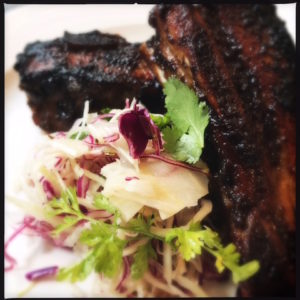
Succulent ‘Old Spot ribs’ — a lovely starter at the Hawksmoor Borough (London)
3rd Tier: Delicious but not Earth-Shatteringly So . . . .

Potato Lompe and Monkfish Liver – by Alex Nietosvuori at Carousel-London

Ooozying with butter … scummy oyster crock monsieur from Bentley’s in Piccadilly (London)

Crab rolled in cucumber, shiso and wasabi — it came with a fresh granita to accentuate the flavour and to freshen the dish.
August 20, 2001 | Categories: travel blog | Tags: A Culinary Adventure from London to Paris, Alex Nietosvuori, Camelia Restaurant, Carousel-London, Le Gavroche, Mandarin Oriental Hotel Paris, mock turtle soup, The Fat Duck, Thierry Marx | Comments Off on mini-blog: Eating Our Way Around the Best of London and Paris . . .

– March 2015 –
Cordoba has long been on my travel bucket list. Unfortunately, the ordeal of a painful international hop-scotch to Andalucia from Hong Kong (via London and then to Barcelona followed by a 5-hour train ride to Cordoba) made this journey logistically infeasible. Thus, Cordoba remained a dream . . . until now — I’ve recently moved back to London and with Spain in my backyard, I am writing this blog from Cordoba!
And my first impression? Sadly, it was not positive at all! Thankfully, first impressions are only just that because my enjoyment of the city markedly improved once I got beyond the first few humps.
My first sight of the city was marred with overfilling rubbish bins and garbage strewned all over the platform at the train station. This was particularly surprising because we’d arrived a few days before the start of Semana Santa (Easter Holy Week) and this was a major event for the city. Although one could attribute this to the ongoing period of deep austerity, I did not see this amount of filth (if at all) in Barcelona, Sevilla and Granada. Prior to arriving in Cordoba, my husband and I spent many wonderful weeks meandering around the aforementioned cities and they were generally spotless.
The bigger surprise, however, was the complete lack of interest and the unhelpfulness we received at the Informacion Turistica reception! We went to the main tourist office near the Mezquita and asked one of the ladies behind the information counter for the Semana Santa procession schedule and routes. This lady, aka “The Unhelpful Cordoba Tourist Officer” told us that she did not have this information. When we’d asked where we could get this information, she told us that the schedule and routes have not yet been set and therefore was not available. This jarred with us because we could clearly see that the council had already started setting up stands along the streets. As such, we ignored the misinformation from the tourist office and went online. Using the link (http://english.turismodecordoba.org/seccion/holy-week) provided to us by our AirBnB host, we mapped out procession routes and timetable ourselves.

Negative first impressions aside, I must confess that I did truly enjoy Cordoba (and Spain) very much. The two issues mentioned above were minor irritants and minuscule compared to the mountain of wonderful food, impressive sights and warm charm of the people and country.
As alluded to earlier, main purpose of this trip was to see the Semana Santa processions in Cordoba. But, rather than do this as a fly-by-visit, we wanted to take our time and explore the key cities. To have a more authentic experience, we’d opted to avoid hotels altogether and use AirBnB accommodations situated in the centre of each city. In all but 1 apartment, we had a private kitchen. This enabled us to cook regional dishes using local produce from nearby markets. To get around, we’d expressly forbade ourselves from taking taxis (unless we had luggage and were in transit to/from the train stations). Whenever and wherever possible, our primary mode of transportation in each city was by walking.
Our slow-and-explore approach meant that we’d spent 7 nights in Barcelona (6 nights at the start of the trip and then 1 night before flying back to London), 5 nights in Sevilla, 6 nights in Granada and 12 nights in Cordoba.
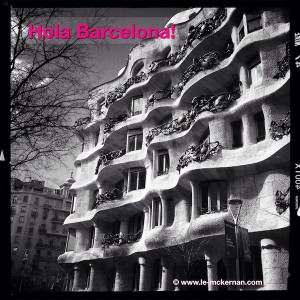
Like Cordoba, Barcelona was also on my bucket list for a long time. I had visions of Gaudi and Dali exploding in urban technicolor; as a photographer, I was chomping at the chance to capture the magic of Barcelona in infra-red. Unfortunately, the sites that I was most keen to photograph were defaced with construction cranes (at the Sagrada Familia cathedral) or with wire fences (at the rooftop of the Pedrera). Paradoxically, these eyesores were actually beneficial as they forced me to find creative angles and be inventive with my composition.
In truth, whilst I’d enjoyed photographing Barcelona, I actually enjoyed my time there more with my Nikons inside my bag. My favourite moments in Barca centered around food. We decided to forgo recommendations from the ubiquitous travel books and blogs and instead use our instincts to select places to drink and eat. I’m happy to report that we did not have one bad meal! We had traditional Catalan food (such as fideua), traditional tapas, churros con chocolate, fresh seafood from the markets, gastropub food, and a few funky artisan dishes. The standout funky dish was ‘baby sardines on filo pastry with caramelised onions … and whipped cream‘. Although this sounded deeply weird, the combination worked — the tastebuds were very happy!!! And other standout dish was veal with ‘cuttlefish noodles’ — the chef shaved the cuttlefish so thinly that the flesh curled like tagliatelle noodles! Surprisingly, however, the dish that I remembered most fondly (and plan to make often at home) was actually the simplest dish we’d had — it was toasted bread with a smear of tomatoes/tomato paste, sea salt and olive oil. We had this dish at almost every meal and never once got tired of it.
I also have very fond memories of the musicians busking by the cafes below our rented apartment. The majority were entertaining but one was simply exceptional. This musician had the whole plaza singing along with him for a full 45 minutes; the crowd would not let him leave — he had to do multiple encores. During this time, we were in our apartment enjoying our siestas but rather than be annoyed by the noises from the crowd, we accepted that we had premier seats in an open-air concert. It was wonderful!
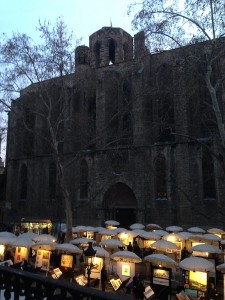
the view from our balcony in Barca
Our apartment was only minutes from the main cathedral so it was naturally the first major site we’d visited. Beautiful. Classic and traditional. Majestic. And more importantly, it served as the perfect benchmark to make comparisons with the Sagrada Familia. In other words, whilst both cathedrals can standalone in their own rights, both were also equally enriched by each other. It was a symbiotic relationship. (I would recommend that visitors see the traditional cathedral first as this would enhance their experience at the Gaudi cathedral.)

Barcelona Cathedral

Sagrada Familia
Barca was the perfect venue to re-introduce us to Spain. By the time we were on the RENFE train to Sevilla, we were completely relaxed and ready for more adventures.
[ CONFESSION: Based on my experiences with English trains, I had low expectations for the Spain trains. It was therefore a delight to find that the Spanish trains were clean and reliable and that the food (in particular, the toasted sandwiches) was actually quite delicious! ]
Train travel in Spain proved to be exceptionally easy. Prior to this trip, I’d researched the connections, timetables, etc. on an online site written by a train enthusiast (thank you Mark Smith — aka ‘The Man in Seat Sixty-One’) and used his recommendations to book the tickets online. As these were purchased in advance, they were cheaper than the daily rate travel. More importantly, it meant that we had guaranteed seats. In short, no stress whatsoever.
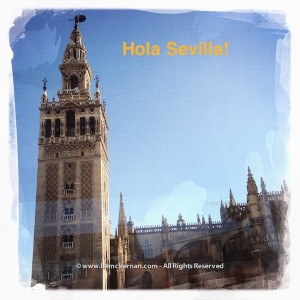
Once in Sevilla, we located our rented apartment and dropped off our bag. Our first priority was to locate el mercado – or, the local market. Even though we had maps and directions, we got lost. Frequently. Although Sevilla is often described as a “big small city”, or as a “small big city”, as an ancient city, Sevilla is crinkly and as such, it was difficult for us to get our bearings. In the end, I think it took us about 2 full days before we became comfortable enough to walk around without maps.
Our attempt to locate the market on the first day ended in failure. We therefore decided to eat out that night. Because most (non-tourist) restaurants in Sevilla do not start dinner service until 8PM, we had time to kill before dinner. We therefore decided to have a drink and walked into a tavern that had the most charm. Little did we know that we struck gold that night. The establishment that we’d stumbled upon was the oldest tavern in Sevilla (it was founded in 1670) and it oozed with a friendly old-world atmosphere. Real Iberian ham and sausages hung from the wall — these were not mere decorations — the waiters plucked the sausages from the wall and carved these to order. In addition, the tavern was full of locals whereby everyone seems to know each other. As I drank my Rioja and soaked in the lovely charm of the place, I decided then and there that I wanted to make this establishment “my local” whilst we were in Sevilla. Consequently, we visited this tavern every night that week. And each night, our experience at this tavern improved. I was genuinely sad to leave Sevilla because it meant that I was leaving this tavern. Our last night in Sevilla was celebrated with a beautiful Rioja, some great tapas, and a homemade flan that was simply the BEST flan I’ve ever had.

at El Rinconcillo, the oldest bar in Sevilla
As if finding this tavern by sheer blind good luck was not enough, we struck gold again a few nights later when at dinner we heard some commotion on the streets. It turned out that a nearby church was practicing their Semana Santa procession. I immediately jumped out of my seat (sorry Bruce!) and raced onto the street to record this short video. And I was doubly lucky because this video was recorded as the procession passed by the enchantedly beautiful Macarena.
My good luck with Semana Santa continued in Granada. In this instance, I wouldn’t described us as being ‘lost’ (because Granada was easily navigable compared to Sevilla) but we did managed to wander ‘off-plan’. During our aimless walkabout, we stumbled upon a church group that was taking their display out of storage. Never shy (especially when it pertained to photography) I got permission to photograph their Madonna. It was particularly special because I was able to get real close and I didn’t have to jostle with other tourists.
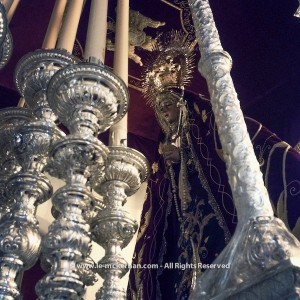
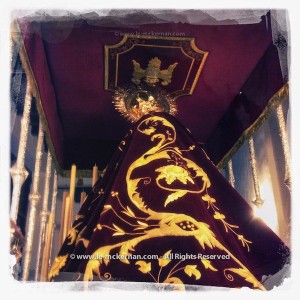
Later that week, we came across more practice processions. I’ve always known that these heavy displays needed many men to carry but it didn’t occur to me that a “medium” display would need as many as 35 men (as demonstrated in this video). It was insightful to see the men practice — not only were the men ‘beasts of burden’, but, they also had to walk in complete unison and march based on instructions barked out by their drill sergeant.
It was quite fortunate that we saw the practice session in Granada because it really made us appreciate how much effort and coordination were required. In the video below, you can see the Semana Santa team (in Cordoba) very skillfully navigate a narrow alleyway and then make an exceptionally tight corner turn. Remarkable!!!
The themes of good food (from Barcelona) and good luck (from Sevilla) continued as we moved onwards to Granada.
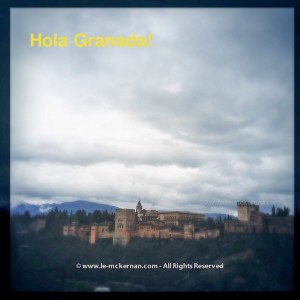
In my research for this trip, I had read that Alhambra has a daily limit on the number of visitors and therefore it was highly recommended to purchase tickets in advance. I assumed that this was only true during ‘peak seasons’ — i.e. during the summer months. But, I didn’t realise that the week prior to Holy Week was a high-demand time and when I went online to ‘browse’ for tickets, I was shocked to see that several of the dates were already sold out! We therefore booked our tickets quickly based on the dates that were still available. It transpired that we were lucky (again!) as the day we visited Alhambra was the only dry day of the week. For the rest of the week, it poured and poured and poured with rain.
[ A little digression here: technically, you don’t need tickets to visit Alhambra as there are some public spaces. But you do need tickets if you want to visit the towers or the palace or the famous landscaped gardens. In addition, you can visit Alhambra at night — this makes sense if you can’t get day tickets or the day temperature is too onerous. ]
In addition to purchasing day tickets, we also purchased night tickets because we thought that we would be able to see and to experience something special. To be completely honest, this was both a waste of time and money. Nothing was really open; the palace and the towers were locked. The tickets allowed us access to the landscaped garden but this wasn’t worth seeing at night. Plus, if we wanted to walk around Alhambra at night (minus the landscaped garden) then we could have entered the grounds without a ticket.
The obvious crowning jewel of Granada was the Alhambra; the other crown jewel was less obvious — ‘Los Diamantes’ was a modern bar in the centre of town that served some of the yummiest tapas we’ve had in Spain. I particularly recommend the fried baby squid and aubergine chips (with honey). [ From the street view, Los Diamantes looked like a tourist trap but surprisingly it was almost always full of locals — a very clear sign to us that this was worth a try! ] Although we’ve eaten at Los Diamantes several times during our short stay, we also took the opportunity to cook for ourselves and to buy fresh produce from the local markets. It was a delight (and quite a surprise) to find Rioja wines that normally costed us about EUR 80 to buy in Hong Kong on sale at the corner market for about EUR 8! Needless to say, we’d happily enjoyed knocking back a few bottles of our favourite brands.
Onwards to Cordoba . . . .
As much as we’d enjoyed Barcelona, Seville and Granada, it was time to hop back onto the train and head to our raison d’être. I’d timed the trip so that we would have a few days to explore Cordoba before the start of the festival. In hindsight, this was a very wise decision because it gave us the opportunity to map out the backstreets and passages which meant that if we needed to bypass or avoid a festival procession en-route, we could easily do so.
Succinctly, the Santa Semana surpassed all of my expectations. This was largely due to the fact that our wonderful AirBnB host managed to secure for us highly coveted tickets for front row seats along the main procession route. This enabled us to watch and to experience the processions unencumbered. It also meant that we were able to get great images without having to shoot over someone’s shoulders. But, in truth, I liked the fact that we experienced the festivals from both these seats as well as from the streets; in many ways, the atmosphere from the street was so very different from that from the procession seats that it often felt that we were experiencing two very different events.
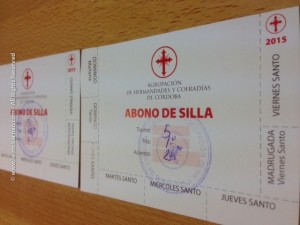

Cordoba, Spain
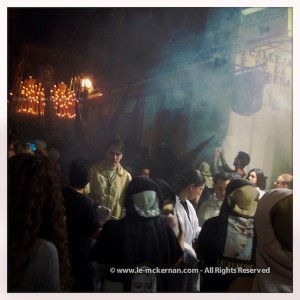
Cordoba, Spain
An unforgettable highlight of the festival was the 2AM procession. This procession was vastly different from the others — it was very sombre; there were no marching bands or musicians and some of the penitents walked the entire route barefooted. I had thought that this procession would have been lightly attended given the lateness of the march but I was woefully wrong. There were several hundreds lined along the procession route as the penitents slowly meandered thru the back streets of Cordoba to the Mezquita.
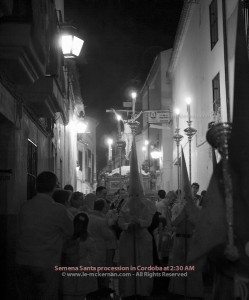
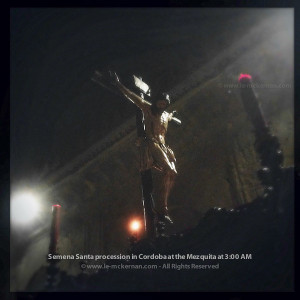
Our evenings were spent watching (or chasing) the processions. Our days were spent exploring the city, eating well and/or simply relaxing. Our rented apartment was only 2 blocks away from the Mezquita and as such, we took advantage of this proximity by exploring this iconic building multiple times in the morning. (Entry is free before 10AM; moreover, groups are banned from the morning entry — a very welcomed banned!) In hindsight, this was a smart move because it was easy to become overwhelmed by the majesty of the building at first sight. By our second and third visit, I found that I was more discriminatory in the types of images I was photographing. During our fourth and last visit, I actually spent more time with my camera in my bag as it was important to ‘drink in the experiences with my eyes and not with my camera’.
The Mezquita is a truly impressive building. (The only other building that I have found to be more impressive is the Haghia Sophia in Instanbul.) As such, I would recommend a visit to Cordoba if not for the Santa Semana festival, then at least for a visit to the Mezquita. This is well worth the effort — even if Cordoba has an extremely unhelpful and disinterested tourist officer stationed at the Tourism Desk.
I would happily spend another month in Spain again . . . .

Happy Travels …. from Tram & Bruce
March 25, 2001 | Categories: Spain, travel blog | Tags: Alhambra, Barcelona, Cordoba, El Rinconcillo, Granada, Holy Week, Informacion Turistica, Mezquita, Santa Semana, Semana Santa, Sevilla, Seville, Spain, The Man in Seat Sixty-One, travel blog, Unhelpful Cordoba Tourist Officer | Comments Off on Travel Blog — a month in Spain . . . .
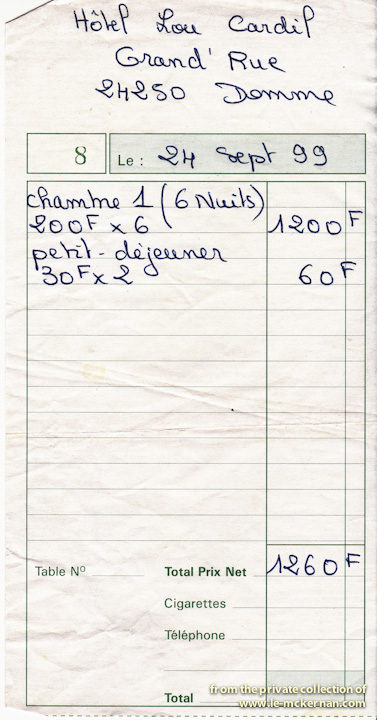
You will note that there are NO advertisements and NO sponsored links on this site. (There isn’t even a Facebook “Like” button.) This is because www.le-mckernan.com is written primarily for ourselves, our families & friends and fellow travellers. Without exception, we pay for our travels ourselves and we receive no advantages, no credits and no discounts. In short, the opinions / viewpoints/ recommendations / critiques expressed here are wholly independent.
The recommendations and comments below are based on first-hand experiences. That said, every travel situation is unique; as such, what I’ve written may or may not be applicable in all circumstances. Regardless, I hope that my reviews are helpful and that you have a safe and wonderful time exploring!
(Organised by alphabetical order of the countries.)
China:
Hotel: The Aman Summer Palace, Beijing
- PROs: location (on the grounds of the Summer Palace; as such, it meant that we had access to the grounds and thus avoided the massive queues to enter) and great service. I particularly enjoyed the day excursion to a quiet section of The Great Wall whereby we were practically the only tourists there. The hotel also arranged for a guide to take us trekking along this long stretch of the wall. It was a very special moment because this section of the wall was completely unreconstructed and therefore completely authentic.
- CONs: it’s an Aman and therefore it’s expensive!
Where to Eat:

Please note that at the time of visit, the hutongs in the area were being demolished. Therefore, it is possible that this may have relocated or have shutdown. Please check.
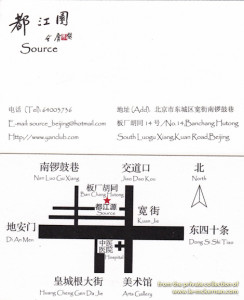
Sensational food in a wonderful location. Very memorable meal!
England – London:
- Sadly, our longstanding favourite brunch place (Tom’s in Notting Hill) has closed down. As a result, our new brunch hangout is The Wolseley in Piccadilly. Although the coffee and pastries are exceptional, the real gem at this establishment is the kedgeree which really has NO EQUAL . . . . [ but one word of caution: the kedgeree can be inconsistent; sometimes it is ‘simply sensational’ and occasionally it is ‘above average’. ]

- Ffiona’s (51 Kensingston Church St.) – when I want delicious restaurant-quality food but in a quiet, cozy and friendly environment, this is the place I go. It is home to fantastic comfort food served with warmth. I am particularly very partial to Ffiona’s chicken kiev as this is just simply delicious.
- The Royal China of Bayswater — believe it or not, the dim sum here is BETTER than the dim sum in Hong Kong. Seriously. The queues here are scary so try to score the first-sittings otherwise you may face a long wait (especially during the Sunday lunch-brunch scrum).
- Yauatcha, Soho London — super posh and fusion dim sums that are delicious. Highly recommend the venison puffs.
- Bentley’s in Piccadilly for oysters and in particular, for their oyster croque monsieur.
- For great Indian food: Cinnamon Kitchen for posh Indian, Dishoom (by Carnaby or the one near Kings Cross) for seriously yummy and moderately priced Indian, and finally Khan’s on Westbourne Grove for delicious affordable Indian.
- Manti by Mike and Ollie (sadly, this is now CLOSED!!!) and Tatami Ramen (for wonderful chicken gyozas) located under the arches in Flat Iron Square off Union Street in Southwark (near Borough Market).
- Texas Joe by London Bridge does an AMAZING smoked Texan Tonkotsu ramen!!! Imagine that! This in my FAVORITE place for ramen in London and is leagues ahead of any competitors.
- City Caphe on Ironmonger Lane and Moi An on Fetter Lane for Vietnamese food (note: weekday lunch hours only)
- Pique Nique has consistency issue but it has improved in my standing after multiple visits. Famous for their tasting menu based on a Bresse chicken (I would agree!), I would also add that they do amazing French style mushroom omelettes for breakfast. (Note: it does depend on the chef — sometimes, the omelette is almost spiritually light and amazing. Unfortunately, it was also (just once) an uneventful simple and ordinary omelette.)
- For a modern spin on Mexican food, there are 2 places to try: El Pastor in Borough Market and Santo Remedio on Tooley Street. If, I had to select one of the two, then Santo Remedio gets my vote as their soft shelled crab taco is just the best. (That said, El Pastor’s sea bass tacos are only 1 small notch below the crab tacos.)
- For fine dining:
- Club Social at Tower 42 — great views and flawless food.
- Le Gavroche in Mayfair
- Dinner (Heston Blumenthal) at the Mandarin Oriental Hotel
- For more details, please see the 2017 London mini-blog.
England – Yorkshire:
- The New Inn at Tickton (near Beverley, East Yorkshire) – this is a lovely country pub that serves honest and fresh produce. I particularly like the fact that this pub sources it beef and pork from the local butcher at the Springdale Farm Shop. [ DISCLOSURE: I actually know the butcher personally and as such, I may be favourably biased. That said, I know that she (the butcher) knows exactly where the meat comes from; the butcher’s husband is the farmer! As such, if you care about the providence of your food, then you can trust the providence of the meat from the Springdale Farm Shop. ] The food at the New Inn is well cooked; the atmosphere is light and modern; the food is reasonably priced and the service is friendly — what more do you need from a country pub?
France:
Where to Eat:
- Le Lunch (Calanque, Sormiou, near Marseille) – although this establishment has very mixed reviews on TripAdvisor, we thoroughly enjoyed our lunch at Le Lunch. Perhaps it was because we were there at the end of the season and the area was absolutely quiet. Or, perhaps it was just a stunning sunny and glorious day to eat out on the deck. Nonetheless, the food seriously impressed us with its simplicity, freshness and taste. We would very happily eat at Le Lunch again and again and again.
- Le Relais des Cinq Châteaux (Vezac, Dordogne) – ah . . . this restaurant is responsible for our addiction to Gaperone cheese! We had the most amazing tasting menu at this classic restaurant and when we thought it could not be a better experience, we were served Gaperone. Ah . . . heavenly cheese to follow a heavenly meal.
- Châteaux de Fere (Fere-en-Tardenois) – the food was faultless and so was the service. In particular, what makes this a special place for me was the fact that we enjoyed the meal so much that at the last minute we decided to eat there again after a long day driving around and exploring the nearby caves. Although we were not properly attired, the staff made us feel completely welcomed and comfortable. Highly recommend their degustation menu.
- a cafe near the Abbaye Noirlac, there is a tiny (but amazing) cafe-restaurant. It doesn’t look like much, but the lunch was so delicious that we actually came back for dinner later on.
Hong Kong:
Where to Eat:
- Nan Tei (55 Staunton Street) – this is my favourite restaurant in Hong Kong. If we have family and friends and we want to take them to a place that is consistently excellent but without the unnecessary grandeur and pomp, we would take them to this wonderful and cozy Japanese grill house. It’s not fancy. It’s not posh. But the food is amazing. Must-order dishes include: lamb cutlets; salmon wrapped in bacon; asparagus wrapped in bacon; chicken wings stuffed with cheese (my favourite !!!!!).
- Yardbird – chicken and chicken and chicken. But ohhhhh so yummmmmy. I am very fond of the “chicken oyster”. And for vegetarians, I would recommend the “KFC” (which stands for Korean Fried Cauliflowers) and the mushroom risotto — both are winners.
- Alfie’s – we predominantly frequent Alfie’s for cocktails. Occasionally, we will eat there. On the whole, the food is great (but a little pricey) and I would happily recommend this establishment. However, I do have one objection and this is relates to the portion size of their steak and kidney pies. The sizes are the same for a starter portion and for a main course portion. Given that the main course is more expensive than the starter, I find this disagreeable.
Indonesia:
Hotels: Amandari (Ubud), Amanjiwo (Borobudur) and Amanusa (Bali)
- PROs: heavenly. This is The Aman at it’s best. And, where better to enjoy The Aman than in Bali? Btw: the passionfruit soufflé at the Amanjiwo is NOT to be missed!
- CONs: expensive! Also, if you do the “Bali & Beyond” package, I would recommend that you add extra days around the Amanjiwo visit to allow for travel and transit time. (We extended our Bali & Beyond package to 11 nights: 5 nights at Amandari, 4 nights at Amanjiwo and 2 nights at Amanusa. This was a wise decision because the transit to/from the Amanjiwo resort took almost a full day each way.)
Kyrgyzstan:
Hotel: Asia Mountains Guesthouse, Lineinaja 1A, City Center, Bishkek. Tel: +996 312 69 02 35
- PROs: clean, friendly staff, nice garden, good breakfast. We would use this hotel again.
- CONs: near a rail line.
Restaurant: Old Edgar (hard to find as the entrance is almost hidden, located to the west side of the Russian Drama Theatre) in Bishkek. This is a moderately priced restaurant featuring Central Asian and Russian food and is a good escape if you are tired of hotel food. Good selection of food. Friendly service. I particularly enjoyed the beetroot and herring salad. Yummmmmmy.
Market: this is actually a WARNING . . . be careful at Osh Market in Bishkek as there are corrupt police officers working the market and targeting tourists. (Pls see the Silk Road travel blog for more information.)
Mongolia:
Restaurant: Silk Road Bar & Grill (Jamiyan Guunii Gudamj, Ulaanbaatar) — oh thank you Lonely Planet for the recommendation! We almost didn’t try this place as it sounded “touristy”. But, as we passed by we noticed that lots of locals were eating there. And, we were tired and hungry and decided to ‘have a go’ . . . wise decision as the grilled lamb was soooooo lovely. (We even tried to reverse engineer the marinade once we got home!)
Scotland:
Where to Eat:
- Chez Fleming (Laggan) – Private kitchen. Reservations are nearly impossible — unless you know the owners. I’ve never had a meal that I didn’t like and I always look forward to my next time there.
- The Cross at Kingussie (Tweed Mill Brae, Ardbroilach Road) — if you can’t get in to Chez Fleming, then this is the next best thing. But, don’t be disappointed about Chez Fleming because the food here is very accomplished and the service is impeccable. In fact, I would say that the quality and execution at The Cross is better than some of the “top restaurants” in London. Every dish we had was beautifully executed and wonderfully flavoured. And it was also very reasonably priced. We ordered from the fixed menu (at GBP 55/person) and were wonderfully surprised by how much we got. The amuse bouches were delightful and the freshly baked bread was sensational. Friends recommended this establishment to us and we are so very grateful because The Cross is now on our must-visit list every time we’re in Scotland.
- The Potting Shed (Inshriach Nursery, Aviemore) — for cakes and coffee/tea. A gem of a place to stop off and have home baked cakes. I particularly love their setup — if you are lucky and can snag a seat along the viewing platform, then you will have a glorious view of the plethora of birds (and squirrels) going bonkers over the multiple bird feeders.
Spain:
Where to Eat in Barcelona:
- Elysa Y Fred (Carrer del Rec Comtal 11) – we were tired and hungry and could not find a nice ‘non-touristy’ place to eat. So, when we stumbled upon this modern and well presented restaurant, we were so happy to get a seat at the bar for a drink and light tapas. The grilled squid was exceptional. In fact, it was so good that we did a repeat visit later that week and enjoyed it the second time around. We normally don’t like repeating places, but, for our last meal in Barca, we had dinner and we were not disappointed. The salted cod checks with black rice was a wonderful (new) food sensation.
- Carmelitas (Calle Carme 42) – very modern establishment that would not look out of place in Manhattan. But it is also a very local Barca establishment — as demonstrated by the clear absence of tourists. The standout dishes were: the burrata salad; smokey grilled beetroot salad with spicy yogurt; and veal with ‘cuttlefish noodles’.
- Le Bouchon (Mercer Hotel, Calle dels Lledo 7) – we did not know that this establishment was connected with the hotel until we were seated. But once at our table, our regrets quickly evaporated. Very good tapas and service. The most memorable dish was ‘baby sardines on filo pastry with caramelised onions and whipped cream’ ….. it was a stunner of a dish!
- Bodega La Punctual (Carrer Montcada 22) – after visiting the Picasso Museum, Bruce and I were ready for lunch but we were weary about eating so close to the museum (i.e. tourist traps!). As we were leaving the area, Bruce noted that this establishment was full of ‘older Spanish men drinking wine’ and he concluded that there is a high probability of this being a decent place to eat given that it was frequented by the locals. He was wrong — it was not a decent place; it was a great place. Of all the fabulous dishes we had, I particularly enjoyed the grilled octopus.
- Caelum (Calle de la Palla)- a special mention is warranted about this establishment. Needless to say it is a fantastic cake shop. But, they also do good coffee and cheesy/marmalady morning toasts.
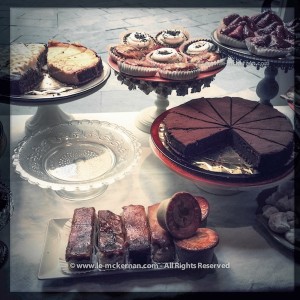
Where to Eat in Madrid:
- TriCiclo (C/ Santa Maria, 28) – the food is simply outstanding. In fact, it was so good that we became repeat offenders and eat at this wonderful establishments multiple times during our 5 days trip to Madrid. Reservations required — and is difficult to get. HOWEVER, if you arrive when the restaurant opens (8PM) then you stand a very good chance of nabbing a table at the front of the restaurant. (This is how we managed to get in on multiple occasions.)
Where to Eat in Sevilla:
- El Rinconcillo (Calle Gerona 40) – as mentioned in my blog, we’d accidentally stumbled upon this place and loved it so much that we made it our local tavern during our week in Sevilla. We did not eat at the restaurant, but instead had tapas and wine at the bar. On our last night, we treated ourselves to the homemade flan and it was the best flan I’ve ever had.
- Restaurante Contenedor (San Luis 50) – the restaurant is famous for slow cooking and for serving local produce. As such, it is very popular and reservations are absolutely necessary. While we were there, we saw the hostess/manager turn away multiple walk-in customers who were attracted to the lively and charming buzz that this restaurant oozes. Warning: the dessert portions are huge!
- La Mata 24 (Calle Mata 24, Alameda de Hercules) – a good alternative to Restaurante Contenedor (if you can’t get booking) but be advised that this one gets busy as well. We did a walk-in at 8PM and to our happy surprise, we got a table but within 30 minutes the place was packed with locals. Fresh and modern dishes.
Where to Eat in Granada:
- Los Diamantes (Plaza Nueva – across from the taxi ranks) — let’s be honest here. This establishment reeks of “tourist trap” as it is bang-center in the most touristy plaza in Granada. But yet upcoming closer inspection, it is almost always full of locals. The reason for this is that Los Diamantes is a rare gem: very very good tapas, good service and all at an affordable price. Highly recommend — and don’t let the crowds deter you. (Alternatively, go at a “quiet time” which is generally at 5PM.)
Where to Eat in Cordoba:
- Mercado de la Corredera, Puesto (Stall) 21 (Plaza Corredera) – the trick to finding this place is to ignore the outdoor seating plaza and head inside the markets. Once indoor, find Stall 21 which is located in the furtherest righthand corner. Then grab a seat or a stand if you see something available (because this place gets really busy — especially during the weekend and during a bank holiday) and then send your partner to the adjacent markets to buy fresh produce which the chef at this stall will cook for you. The principle is simple: you source the food you want to eat and you tell the chef how you want it cooked (fried, grilled, steamed, boiled or baked) and he’ll produce a simple but wonderful dish for you (EUR 3 for a large plate). And this stall sells wine and beer as well. Perfecto!!!
- Amarre (Calle Ronda de Isasa 10) – located near the Mezquita and along the river, this establishment was the perfect place to place our feet up and have a cold beer. Whilst there, we saw the staff bring out beautiful plates of food so we decided to have a bite as well; we were pleasantly surprised by the quality and freshness of the food. The standout dish was the tuna tartar on a bed of avocados accompanied by a wonderful balsamic vinegar.
- fusion by sojo (Paseo de la Ribera) – a great place for breakfast. Great location.
- Taberna Los Berengueles (de Torres Cabrera 7) – as we passed by this restaurants several nights prior, it was full of locals which piqued our interest. One night we found ourselves back in this area and although we had no reservations, we decided to try our luck getting in. We were indeed lucky as we managed to secure a table in the lovely courtyard. Very soon thereafter the dinner crowd arrived and the place was buzzing. The atmosphere was wonderful and relaxed (I loved the orange blossom scents wafting around the courtyard) and the food was good (the starters were exceptional — in particular, the pate platter and the white asparagus salad; the main course, however, was somewhat pedestrian). Although this restaurant has room for improvements, I cannot fault this place for its honest approach to food and for the friendliness of the staff.
Sri Lanka:
Hotel: The Wallawwa (www.thewallawwa.com), Colombo
- PROs: a luxurious haven (could be mistaken as a “W Hotel”) and a great launch pad to/from the airport; fantastic food! Recommend that you arrange airport transfer with the hotel.
- CONs: expensive. And bring a surge protector if you plan to charge your expensive electronics. (Our surge protector did its job properly and protected my laptop from being fried.)
Hotel: The Summerville Bungalow (The Ceylon Tea Trails)
- PROs: fantastic and idyllic location, private chef and butler service, heavenly service. (Plus: chef baked a beautiful chocolate cake for Bruce’s birthday).
- CONs: expensive
Driver: Tropical Transport ( tropicaltrans@sltnet.lk )
- Contact: Lesly David
- PROs: reliable, good quality car, no malarky. Would happily use this company again as a private taxi.
Turkey:
Hotel: Sultanahmet Palace Hotel (www.sultanahmetpalace.com) in Istanbul
- PROs: fantastic location (get the room with the view of the Blue Mosque), friendly service, good food.
- CONs: not sure any . . . at the end of the day, this is our hotel in Istanbul. First discovered this place in 2000 and have been returning to it ever since!
Cocktails:
- Four Seasons Hotel, Sultanahmet – great location and interesting building (this was previously a Turkish prison)
- Mikla (www.miklarestaurant.com) — great views!
USA – Washington, DC:
The three best meals we had in DC are from:
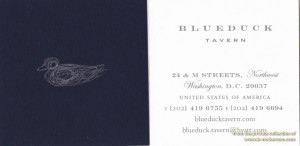
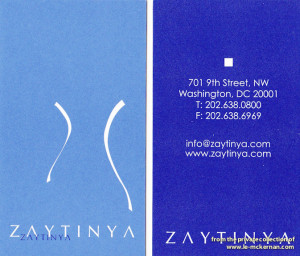
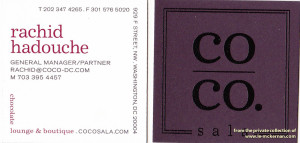
USA – New York City:
Restaurants:
- Takahachi — simply THE BEST place for honest and superb sushi

- Mogador Cafe and Bar, St. Marks — for phenomenal brunches and hearty Moroccan food. This is one of our all time favourite places and I can’t highly recommend it enough. (During peak hours, service could be improved, but, the food is amazing and well worth the slow-ish service.)

Mogador brunch — before and after!
Cocktails: King Cole Bar at St. Regis Hotel — has a wonderful Old Manhattan (old money) charm.
. . . And FINALLY, please remember that according to the food-safety poster below, you should NOT eat fish with rhinoceros when you travel!!!
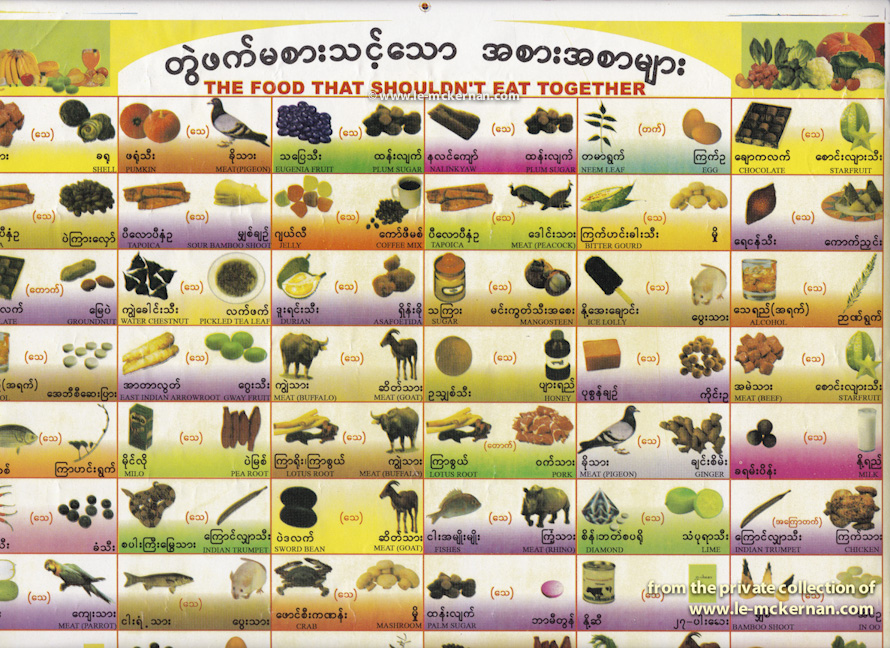
January 4, 2001 | Categories: travel blog | Tags: Abbaye Noirlac, Alfie's, Amandari, Amanjiwo, Amanusa, Asia Mountains Guesthouse, Bali & Beyond, Bishkek, Blue Duck Tavern, BlueDuck Tavern, Coco Salsa, Dordogne, El Rinconcillo, eltriciclo, Elysa Y Fred, Fere-en-Tardenois, Ffiona's, Ffiona's Kensington Church St, Four Seasons Sultanahmet, Hotel Lou Cardil, Inshriach Nursery, La Mata 24, Le Lunch Calanque, Le Lunch Sormiou, Le Relais des Cinq Châteaux, Liqun Roast Duck Restaurant, Los Diamantes, Mikla, Mogador, Old Edgar, Osh Market, Osh Market Bishkek, Restaurante Contenedor, Royal China Bayswater, Silk Road Bar & Grill, Springdale Farm Shop, Sultanahmet Palace Hotel, Summerville, Summerville Bungalow, Takahachi, The Ceylon Tea Trails, The Cross at Kingussie, The New Inn at Tickton, The Potting Shed, Tropical Transport Sri Lanka, Ulaanbaatar restaurant, Vezac, Wallawwa, yardbird, Yauatcha, Zaytinya | Comments Off on Places & Things We Like . . . .

Supporting the #YesAllWomen movement:
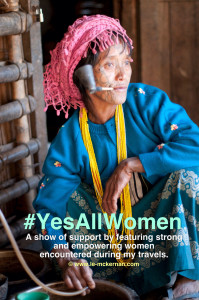
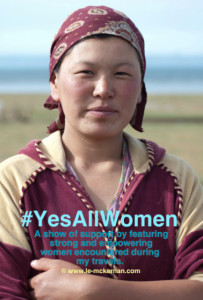
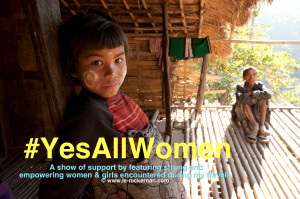

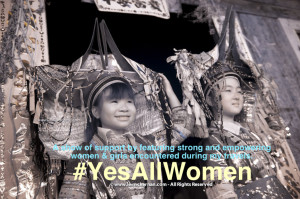
January 1, 2001 | Categories: travel blog | Tags: PixieViewpoints, YesAllWomen | Comments Off on Images created for Pixie’s Travel Accounts . . .


































































































